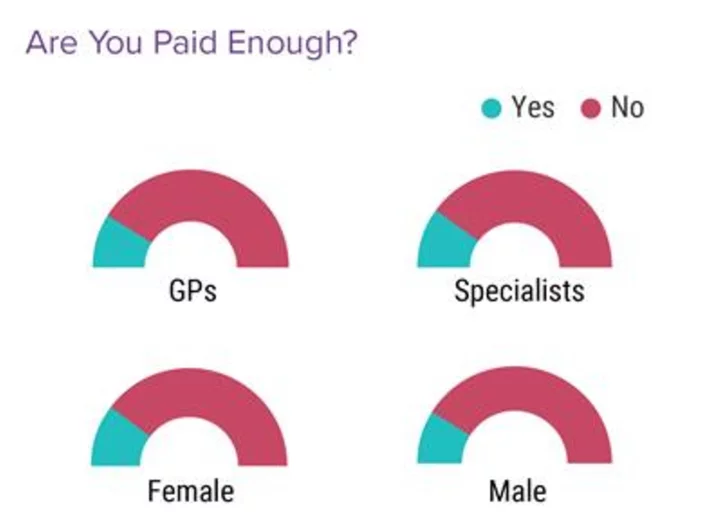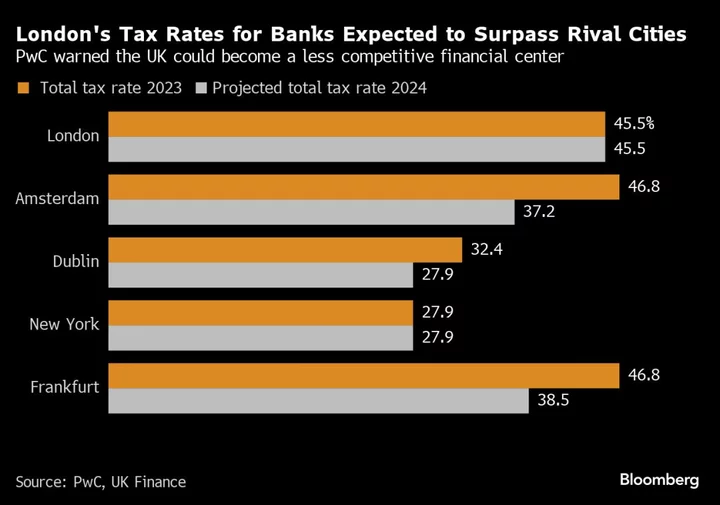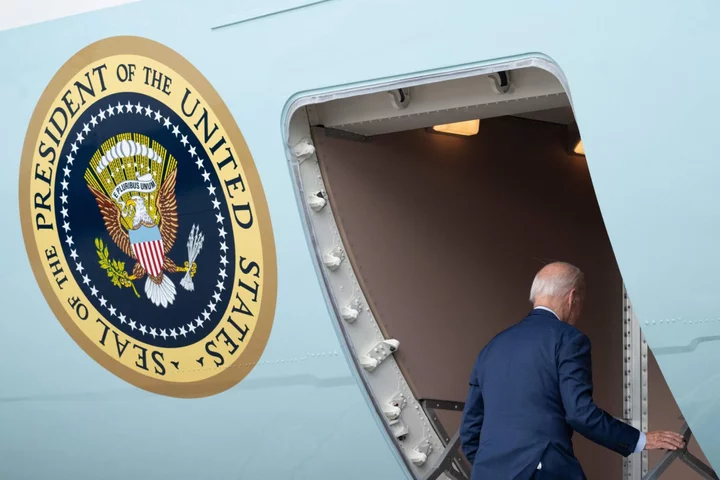Republican lawmakers who oppose the debt-ceiling bill argue it doesn’t do enough to cut spending or reduce the deficit. Yet when defense is concerned, many argue the government ought to be spending more, not less.
Under the deal passed by the House on Wednesday evening and sent to the Senate, defense spending would get the 3.3% increase the president proposed for the coming year — even as other programs are cut. Defense hawks are pushing for an even bigger boost, and Senator Lindsey Graham has proposed an amendment to the bill that would increase defense spending to keep up with inflation.
“When I hear Republican leaders say this budget deal fully funds defense, I laugh,” the South Carolina Republican told reporters Wednesday.
The apparent contradiction by Republicans — demanding deep spending cuts on all other discretionary programs while boosting defense — isn’t new, and it’s bolstered by current and potential military threats from Russia and China. But it’s also provoked consternation for budget critics who argue the Pentagon budget is laden with waste and bloat, and should come in for cuts just like anything else.
They point to numerous programs that are massively over budget, such as the F-35 Joint Strike Fighter, now the world’s most expensive weapons program that’s projected to cost $1.7 trillion over its 77-year lifetime. Earlier this week, auditors said it may cost $38 billion just to deal with a possible engine-overheating issue.
Read more: F-35 Jet’s Overworked Engines May Cost $38 Billion in Upkeep
“Without question, there are major savings to be found in the defense portion of the budget,” Maya MacGuineas, president of the nonpartisan Committee for a Responsible Federal Budget, said in an email. Still, she said, there are “legitimate differences over whether due to threats in the world overall spending will have to be higher in coming years.”
Biggest Increase
The administration’s $886.3 billion national security budget request for fiscal 2024 provides the biggest-ever defense spending increase and also one of the largest peacetime budgets when adjusted for inflation. The US would be spending more on defense than the next 10 nations combined.
The negotiated debt bill would allot $895 billion for national security in fiscal 2025, less than the $907 billion previously projected by the Biden administration.
Still, President Joe Biden has suggested he agrees with Republicans like Graham, telling reporters he would seek more funding for the military as part of an emergency supplemental bill if needed.
Lawmakers have plenty of options if they want defense cuts. In December, the Congressional Budget Office laid out several defense system options and savings, including scrapping the Air Force’s entire inventory of 183 F-22 stealth fighters. That would save $24 billion on an outdated weapon that first flew in 1997.
Earlier: US Navy Is Hobbled by Readiness Failures as China Risks Loom
Another potential target would be to cut back on the department’s 500,000-plus private contract employees. Cutting that budget by 15% could save over $26 billion per year, according to a 2019 Center for International Policy task force.
In fact, Congress appropriates so much money to the Pentagon that it returned almost $128 billion in unspent cash to the US Treasury in the 11 years ending in 2019, according to a first-of-its-kind audit by Congress’s watchdog agency.
But Senator Roger Wicker, the top Republican on the Senate Armed Services Committee, said in an interview that he’s a “likely no” on the debt bill, calling it a “disaster.” If the senator from Mississippi votes against the measure, it may be a cue for more Republicans on his committee to follow suit, complicating passage of the legislation when it gets to the Senate.
Republicans pushing to spend more on defense are guided by the ideology that “providing for the common defense is the only mandatory function” of the federal government, said Mackenzie Eaglen, a resident fellow with the American Enterprise Institute. The result, she said, is a willingness to cut non-defense spending, in part, to pay for elevated military budgets.
Yet defense spending also benefits lawmakers’ political needs, and there’s little appetite for major reductions. Almost every state has economic ties to the F-35 project, with 29 states counting on it for $100 million or more in economic activity.
The F-35 creates 250,000 jobs in 45 states and Puerto Rico, according to the plane’s manufacturer, Lockheed Martin Corp. The stealthy jets are assembled in the Ft. Worth, Texas, district of House Appropriations Chair Kay Granger, who writes the annual government spending bills.
Critics also argue it’s not just that the US spends more on defense — it’s that the US is getting less bang for its buck. The Pentagon is committed to spending more each year on pensions for retired service members, along with other priorities like a burgeoning number of classified defense intelligence agencies.
“We are spending more in constant dollars and getting less in terms of output, whether it’s the size of the active military, the number of major weapons systems or the quantity of fighting forces,” said Arnold Punaro, a former Senate Armed Services committee staff director and chairman of the Secretary of Defense’s Reserve Forces Policy Board.
For some critics the Pentagon budget bloat is a reflection of a bigger problem faced by the US military — a refusal to think about what its priorities should be.
“A defense budget that served a coherent strategy, one that makes meaningful choices between regions, perceived enemies, and programs to combat them, would be less ambitious and cheap,” said Defense Priorities Policy Director Benjamin Friedman. “The real problem with U.S. defense is that it underwrites an impossibly ambitious and counterproductive effort to dominate the world militarily.”
(Updates with House passage in second paragraph)









